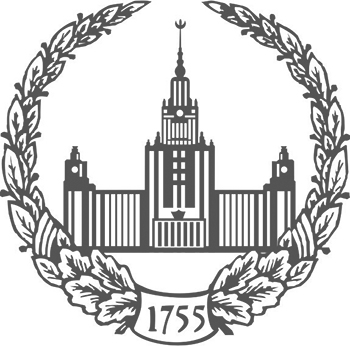Department of Modern and Contemporary History, Faculty of History
-
The Causes of the Second World War: Theoretical ProblemsMoscow University Bulletin. Series 8: History 2021. N 5. p.73-96read more1331
-
The Second World War was a multidimensional, complex conflict covering several large-scale and narrow armed conflicts which intertwined, interacted and influenced one another. Some of them had already been existent, starting before 1939; some were interstate conflicts that had not previously moved into the phase of armed confrontation, some did not emerge or become the pivot for the system of international relations until September 1939. In connection with this intertwining of conflicts it would appear necessary to clarify the question of the causes of the Second World War. In order to put forward a scientific hypothesis about the causal relationship between the structural specifi city of the system and the conditions for the start of the war, we should discuss, first of all, whether the system had a functional core (ensuring its stability) and what was its state in on the eve of the war. Another set of problems is related to the political poles (centers where power concentrated and the military-political decisions were made) in the system, as well as to the process of polarization (increasing confrontation of interests) of these centers. The proposed concept of the origin of the Second World War and the conditions for its outbreak is based on the thesis that the systemic state that emerged in the period between the two world wars was not multipolar. Polarization (as a process of a sharp divergence of interests within a group of the major powers) led to the emergence of bipolarity as a new macrostructural principle of system organization. At some stage the state of affairs was complemented by the change of the leading power at global level. The state of the system of international relations in 1939 acquired a fundamentally new macrostructural quality — incomplete (or cluster) bipolarity. This feature arose because the process of forming confl icting military-political alliances was far from being completed. Thus, the central complex of theoretical problems posed in the article will involve an assessment of the role that the accumulation of power and the struggle for leadership in this area played in shaping the conditions for the outbreak of World War II.
Keywords: macrostructure; system; power; bipolarity; international relations; world war; security
-
-
Bikini Atoll, Nevada, Moscow. Washington’s long road to the partial test ban treaty (1958–1963)Moscow University Bulletin. Series 8: History 2023. N 6. p.117-137read more798
-
The conclusion of the 1963 Moscow Treaty banning nuclear weapon tests in the atmosphere, in outer space and under water is an important milestone in the history of the Cold War. It was preceded by long and complex negotiations between the USSR and the US. Measures to impose a moratorium on tests (August 1958 — August 1961) did not yield signifi cant results either in reducing harmful environmental consequences or in reducing the risk of nuclear conflict. In addition, the issue of at least partial test ban was closely linked to the political contradictions between the superpowers, in particular, regarding the status of Berlin. On 9 September 1961, the negotiations were stopped. In the fall, the USSR conducted a large series of explosions, and advances in weapons development required new tests. Moscow’s decision to withdraw from the moratorium was dictated by the desire to demonstrate to its opponents the readiness for any emergency. In 1962, the events around Cuba led not only to intensified testing by both powers, but also to the acute Cuban Missile Crisis in October, when the danger of using nuclear weapons became quite real. The August 1963 treaty was one of the immediate outcomes of the Cuban Missile Crisis. However, it is also important that the superpowers came to the signing of the Moscow Treaty only after their scientific and technological achievements (including, above all, the results of nuclear tests) had been able to ensure a confident strategic deterrence of each other. The tests of nuclear devices conducted by both powers in 1961 and 1962 allowed them to equip all types of carriers with warheads as part of their planned programs to renew strategic nuclear arsenals. At the same time, the Moscow Treaty created a basis for harmonizing the positions of the US and the USSR with regard to nuclear nonproliferation for many years to come.
Keywords: Cold War; John F. Kennedy; N.S. Khrushchev; nuclear weapons; arms control; underground nuclear testing
-
-
New dimension of the Cold war: American military space projects (1957–1963)Moscow University Bulletin. Series 8: History 2024. N 4. p.143-166read more482
-
The military aspect of the U.S. space projects between 1957 and 1963 has hitherto been the subject of only cursory consideration in the Russian scientifi c community. In the context of the rivalry with the USSR in the exploration of near-Earth space, large-scale U.S. military-space projects were driven by numerous objectives, one of which was to establish a military presence in space and, ideally, to achieve undisputed American military superiority in near-Earth space. From the outset of the “space race”, initiatives were devised and executed to develop vehicles for reconnaissance activities, concurrently with programs for novel space-based armaments capable of targeting the USSR from near-Earth space. Moreover, proposals by the American military and scientists indicated the commencement of “military exploration” of the Moon. These proposals encompassed the establishment of an artifi cial habitat for human habitation, along with the construction of a military base on the Moon’s surface (or subterranean), equipped with launch pads for missiles armed with nuclear warheads. The prevailing assumption at the time was that these missiles would ensure the destruction of the primary adversary, even in the event of the U.S. mainland being targeted, following the initiation of a nuclear exchange. A further area of early-stage military-space research involved the development of means to combat enemy satellites, with the use of nuclear weapons being a distinct possibility. The overarching objective of military space programs was twofold: firstly, to ensure scientific and technical superiority in open space research, and secondly, to demonstrate this to the global community. A direct correlation was observed between advancements in near-Earth space exploration and the global perception of the two superpowers as rival world leaders during the late 1950s and early 1960s. It is important to note that neither of the two superpowers achieved an obvious “victory” in the space arms race during the period under consideration; however, the general vector of space exploration was set at that time.
Keywords: Space Race, U.S. Department of Defense, lunar program, military space exploration, rocket technology, nuclear warheads
-



